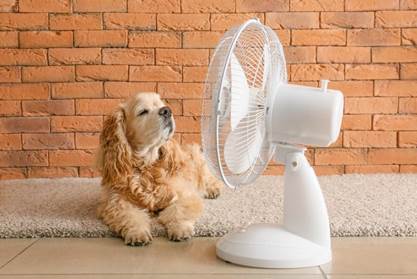I’m a Vet: Dogs need suncream as temperatures start to rise

With the Met Office predicting new global temperature records on the horizon, vets are warning pet owners in the UK to take precautions against an already dangerous time for pets.
“As we all get out and about more this summer, it is of great importance that your pets are summer ready too. Make sure they are up to date with their health checks and vaccinations to ensure they stay safe and can enjoy the sunshine with you” says veterinarian Dr Lily Richards, BSc (Hons) BVSc MRCVS.
Pet-sitting company TrustedHousesitters worked with veterinarians to create a summer checklist owners should complete to ensure their pet’s safety.
Here are five crucial safety steps every pet parent should cover this summer:
Check garden plants
Summer gardening may be on your to-do list, but first, be sure you’re not putting your pet in danger with toxic flowers. Below are just a few of the most common summer poisonous plants to keep your pet away from:
Elephant’s Ear
Hydrangea
Tulips
Lilies
Daffodils
Azalea
Aloe Vera
Amaryllis
Baby’s Breath
Sago Palm
Brush off the winter coat
You wouldn’t want to spend time outside with a winter coat on – and neither does your pet. While spring shedding occurs naturally, a speedier process will ensure your pet is far more comfortable as the temperatures quickly rise. Dr Lily Richards explains, “Brushing our pets and keeping their fur trimmed in the summertime helps them shed their thicker undercoat, ensuring they don’t overheat in the sun while enjoying time with the family.” Do not shave your pet, as this can result in an uncomfortable coat – brushing only!
Stock up on pet-friendly suncream
Like humans, pets get sunburned too. “Pets with white fur, especially over their noses or ear tips, and furless pets are especially prone to sunburn and risk developing sun-related cancers if exposed for long periods without protection”, says Dr Lily Richards. She suggests, “Pet-friendly suncream is great for ensuring your pet stays safe and can enjoy the sun with all the family. Don’t be tempted to use human suncream; some of them contain zinc, salicylates, and propylene glycol, which are toxic to pets, and can cause problems if ingested.”
Map out a safe walking route
Be sure your usual walking route is still safe for your pet during hotter temperatures, and if not, prepare to map out a new one. With pets much lower to the ground, their bodies more easily absorb the heat from asphalt and other hot surfaces. This, combined with fur layers and increased heart rates, greatly increases your pet’s chances of overheating. Walk your pet on a shaded route to prevent paw burning. If possible, opt for a grassy walk where routine summer pesticide spraying is unlikely. Remember, cars can reach extreme temperatures in summer, so leave pets at home if you’re heading for a drive and stick to walks closer to home.
Dr Lily Richards recommends you “Walk dogs in the cooler parts of the day, either early morning or evening, to prevent overheating. You should take extra care with those that are prone to overheating, like flat-faced dogs, older dogs or younger pups.”
Check for new insect nests
Wasps, bees and other stinging insects grow in numbers during the summer, and they may find your garden, balcony, or patio a perfect place to nest. Sweep your outdoor areas for the development of any nests and remove them with help from a professional. These insect stings can cause your pet to have an allergic reaction, and they might even develop life-threatening anaphylactic reactions.
Before taking off on your summer travel plans, plan for your pet too. Find qualified, background-checked pet sitters with access to a 24/7 vet hotline on TrustedHousesitters today.





